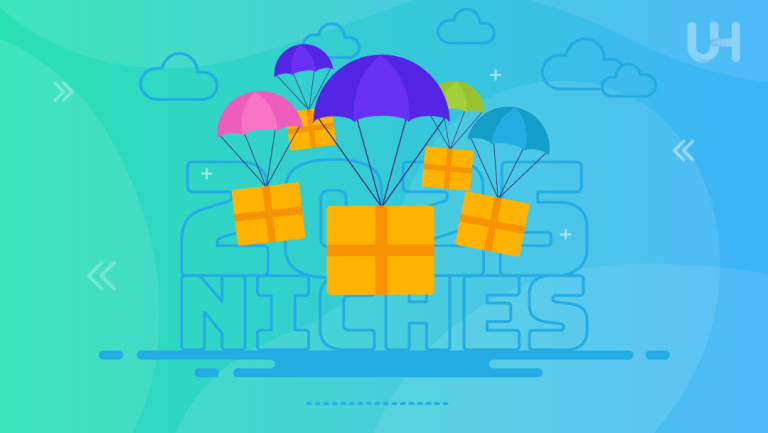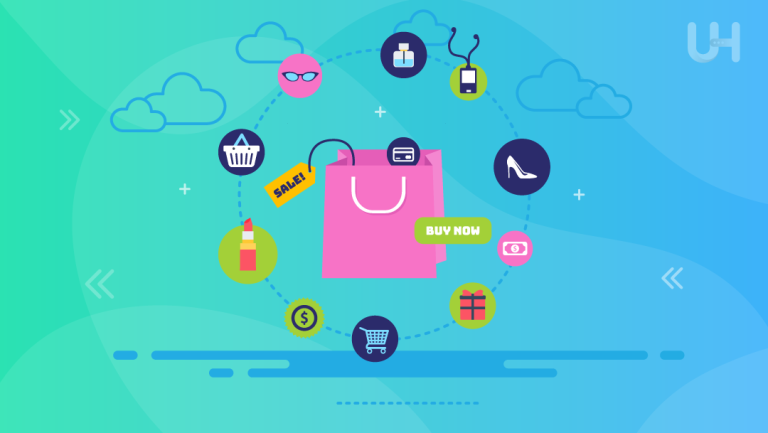The print-on-demand business model is growing more popular in the changing e-commerce world for the simple and low-risk way this business model exists. In this model, the entrepreneur is able to enable his custom-designed products for sales, while there is no high investment in inventories or some other problems regarding shipping. Print on demand, in this way, provides creatives and small business owners with an exceptional opportunity to see their unique designs come into the market with very little up-front investment.
In this article, we will explain print-on-demand, how it works generally, and its advantages or drawbacks for an owner. We will also examine different customization techniques, popular products you could offer, and how choosing the right provider will likely enable your POD business’s success.
What is Print-on-Demand?
Print-on-demand or POD is a business model whereby products are printed only in the event of receiving orders. This negates most of the need for heavy investment in inventories and enables companies to offer various customized products. In more common usage, POD applies to custom T-shirt printing, accessories, housewares, and other merchandise. However, it is truly targeted at artists, designers, and entrepreneurs.
On the other hand, the product in a traditional retail marketing chain would be produced in bulk lots, warehoused in warehouses, and then distributed. With the POD business model, there is no warehousing of products but instead printing upon receiving a customer order of the selected design and then shipping directly to the customer. This means that warehousing and inventories are minimal, and upfront production costs are reduced to a minimum to allow a new business owner to start operations.
How Print-on-Demand Works?
The process within the print-on-demand business model is triggered when a customer orders a product that the customer has designed. The order should be forwarded to a provider of print-on-demand services to print the design on the chosen product. Subsequently, following printing, the product needs to be packaged and dispatched directly to the customer. This system eliminates all the work the business owner would do without it regarding production, storage, and shipping.
The cool thing about print-on-demand is that it works on a per-order basis. You are not required to invest in mass inventories; businesses pay for the products when the order arrives. This makes the venture very low-risk while giving the entrepreneur much time to focus on marketing, designing, and building the brand.
Choosing a Provider
To start a print-on-demand business, you need to choose a provider. Several different POD platforms offer different services with variations in quality and price. The most popular are Printful, Teespring, and Printify. So, while selecting your provider, consider what kind of product the site will provide, what printing methods will be available, shipping, and, finally, whether integrations are available with any major e-commerce platforms, like Shopify or Etsy.
Researching the provider’s reputation for print quality, customer service, and fulfillment times is vital. A good provider will ensure that your products are printed correctly and that the shipping is on time, which is crucial for customer satisfaction and business success.
Selling Products
Once you have chosen a provider, start listing your products for sale. Under the print-on-demand model, anything from apparel and tech accessories to home goods can be sold. You can create an online store or sell your items through platforms like Etsy, Amazon, or eBay to reach your customers. The secret to success here is designing appealing designs that catch your target audience’s attention and make your products stand out.
Marketing your POD products means you are exposing them to social media, email campaigns, and other digital marketing strategies. Utilize the best media hosting and premium email hosting for this purpose. Since the financial risk is minimal in the POD model, you are free to experiment with different designs and several marketing strategies until you get it right for your business.
Order Fulfillment
After that comes order fulfillment in the print-on-demand process. Once a customer buys, the POD provider has to oversee the product’s printing, packing, and mailing directly to that client. The length of this service depends on the provider. The timescale for order fulfillment falls between some days and approximately two weeks, with an added shipping time that wholly relies on a customer’s location.
This feature within the POD model is quite inviting because it saves time and eliminates the inventory headache. However, it presupposes setting customers’ expectations regarding delivery, and good communication with the service provider should be maintained to ensure everything goes smoothly when fulfilling it.
Pros and Cons of Print-on-Demand Services

While print-on-demand has many advantages, it also has some disadvantages. Let’s look closer at the pros and cons of this business model.
Pros
- Low Start-Up Costs: Since only ordered products are printed on demand, there is no need to invest your money in bulk inventory and expensive equipment.
- No Inventory Management: You don’t have to worry about inventory management since the provider will print and ship the products.
- Flexibility in Product Offerings: A wide variety of customized products can be provided without the huge investments required for an identical number of dedicated production lines.
- Scalability: The POD model allows you to easily expand your business as demand grows without the additional headache of production or storage logistics.
- Customization: You can easily make and update unique designs according to customer preferences or trends.
- Global Reach: POD providers often handle international shipping, enabling you to contact any customer worldwide.
Launch Your Print-on-Demand Store Today!
Looking to start your print-on-demand business? Pairing your store with reliable eCommerce hosting is the first step toward success. UltaHost offers fast, secure, and scalable hosting tailored for eCommerce platforms.
Cons
- Lower Profit Margins: Because most POD providers print and fulfill themselves, service fees eat into profits. You might want to avoid pricing your book too low.
- Less Control Over Quality: Most POD providers have very good quality prints, but you will not have full control over the final product or customer experience.
- Longer Shipping Times: Shipping times can be longer than those experienced in the traditional retail model, especially if the customer is very far from the provider’s warehouse.
- Limited Customization Options: Some vendors might limit creativity by restricting the products offered or the designs to be printed.
- Dependence on Third-Party Providers: You depend on a third-party provider for printing and shipping, so any problem it will go through will directly affect the operations of your business.
Customization Techniques For Print-on-Demand Business
One of the selling points of the print-on-demand business is customization. POD businesses use various printing techniques to personalize products, each with unique advantages and challenges.
Screen Printing
Screen printing is one of the oldest and most popular forms of customization for apparel, such as T-shirts. It involves applying ink to fabric using a mesh screen. This process is very well adapted for high-volume but low-color orders since designs with many colors and small details may be unsatisfactory. Screen printing is more robust in its results. It typically requires a higher investment upstream in equipment or seeking provider partnerships that can deliver in that respect.
Direct-to-Garment (DTG) Printing
DTG is a rather newer technique of printing inkjet on the garment itself. It works best when the design involves many colors or minute details. The result from DTG printing is high quality, the colors are great, and there are no setup fees, unlike in screen printing. It is also ideal for low runs and unique designs, hence most popular in POD businesses.
Direct-to-Film (DTF) Printing
DTF is a more advanced technique for printing designs onto a film that is later applied to the product. It can work on garments, ceramics, and various other promotional products. DTF is extremely vivid in detail and handles intricate designs with total ease, making it perfect for businesses with complicated designs.
Sublimation Printing
Sublimation printing is done for products made of polyester or polymer coating items. It’s a process that changes ink into gas bonded with the fabric. The sublimation printing will be in vivid colors and quite durable since the ink becomes part of the fabric itself. However, it cannot work on cotton-based products, which limits its applications to only a few types of products, such as polyester T-shirts, mugs, and phone casings.
Products to Choose for Your Print-on-Demand Business
You can think about the needs of your target market, what variations are possible with a product, and the costs associated with each when deciding what products to carry in your POD business. Here are some popular products:
- T-shirts: This product is the bread and butter of the POD world. It is highly demanded and offers plenty of design possibilities.
- Hoodies: Hoodies and sweatshirts are another popular style. They are best worn in colder climates and allow ample space for creative designs.
- Eco-Friendly Products: Sustainability is an ever-growing concern, so offering eco-friendly products like reusable tote bags and organic T-shirts will help attract environmentally conscious customers.
- Stationery: Notebooks, journals, and planners are among the hottest products for any POD business. Above all, these options appeal to customers who plan on ordering gifts or are willing to order office stationery.
- Drinkware: Customized mugs, water bottles, and tumblers are always in demand and offer great possibilities for personalized design.
Conclusion
The print-on-demand business model provides a low-risk and flexible way to create and sell uniquely designed products. You can build a successful POD business using a good provider, cool designs, and fantastic marketing techniques. Besides the several challenges you are likely to face as low margins of profit creep in and scaling the shipping length increases, this is still a great model for any business with much scalability and low development cost while also allowing customization options. While coupled with your product choice, sophisticated printing techniques can let you carve a niche within this growing e-commerce.
To build a successful print-on-demand business, a reliable hosting solution is essential for managing your online store seamlessly. Choose Managed WooCommerce Hosting from UltaHost for optimized performance, security, and expert support.
FAQ
What is print-on-demand?
It’s a business model where products are made after an order is placed, avoiding large inventory.
Is print-on-demand expensive to start?
No, it requires minimal upfront costs, like design tools and marketing.
What products can I sell?
Items like t-shirts, hoodies, eco-friendly goods, stationery, and drinkware.
Can I customize designs?
Yes, customization depends on the printing method and product type.
How do I choose a provider?
Look for quality, product variety, shipping times, and platform integrations.
What challenges exist?
Lower margins, shipping delays, and reliance on third-party providers.
Can I sell internationally?
Yes, many providers support global shipping, but costs and times may vary.












